| View previous topic :: View next topic |
| Author |
Message |
Joosep


Joined: 25 Jan 2010
Posts: 305
Location: Estonia, Tallinn
|
 Posted: Sun Oct 03, 2010 3:46 pm Post subject: Posted: Sun Oct 03, 2010 3:46 pm Post subject: |
 |
|
Joosep wrote:
To me: "The crazier and messier the better" (with mf lenses).
I love character. If I get payed for shooting (like events or studios), then I use my AF lenses and digital body (less room for error).
If I shoot for myself, I like the biggest lenses with the strangest attitude and ofcourse film cameras.
Purely subjective in my case.
"Theres a tool for every job."
_________________
The future is analogue.
23 cameras, 25 lenses and counting. |
|
| Back to top |
|
 |
blende8


Joined: 29 Sep 2007
Posts: 260
Location: Bremen, Germany
|
 Posted: Sun Oct 03, 2010 5:27 pm Post subject: Posted: Sun Oct 03, 2010 5:27 pm Post subject: |
 |
|
blende8 wrote:
Well said, Arkku!
To really evaluate the Bokeh characteristics of a lens, you have to compare it to other lenses using the exact same motive.
The motive depends on what you want to show, or what interests you.
E.g. you can check the circle of confusion:

Or the behaviour with crosses:

Most things you read on the internet on the Bokeh of a certain lens are not true, but based on subjective impressions from some images.
In my opinion, most modern lenses today are not optimized for Bokeh, but for sharpness and contrast. You can see this in the circle of confusion that always has this bright border (see above) in background. It is said that this is due to an over-correction of spherical abberation to improve sharpness.
What I would like to see is a lens that is showing a real Gaussian brightness distribution in the CoC of the background.
A lens optimized for Bokeh is e.g. the Minolta/Sony 135mm STF lens (--> Google).
_________________
Best wishes, Wieland
K-1, K-5IIs
Pentax, mysterium quod absconditum fuit ... |
|
| Back to top |
|
 |
trifox


Joined: 14 May 2008
Posts: 3614
Location: UK
Expire: 2014-05-29
|
 Posted: Sun Oct 03, 2010 5:30 pm Post subject: Posted: Sun Oct 03, 2010 5:30 pm Post subject: |
 |
|
trifox wrote:
| blende8 wrote: |
Well said, Arkku!
To really evaluate the Bokeh characteristics of a lens, you have to compare it to other lenses using the exact same motive.
The motive depends on what you want to show, or what interests you.
E.g. you can check the circle of confusion:

Or the behaviour with crosses:

Most things you read on the internet on the Bokeh of a certain lens are not true, but based on subjective impressions from some images.
In my opinion, most modern lenses today are not optimized for Bokeh, but for sharpness and contrast. You can see this in the circle of confusion that always has this bright border (see above) in background. It is said that this is due to an over-correction of spherical abberation to improve sharpness.
What I would like to see is a lens that is showing a real Gaussian brightness distribution in the CoC of the background.
A lens optimized for Bokeh is e.g. the Minolta/Sony 135mm STF lens (--> Google). |
Superb explanation - and I have to say - yes, modern lenses are not optimized for bokeh or no too much 
that's why we love MF lenses, don't we? 
_________________
Flickr.com |
|
| Back to top |
|
 |
Orio

Joined: 24 Feb 2007
Posts: 29545
Location: West Emilia
Expire: 2012-12-04
|
 Posted: Sun Oct 03, 2010 5:40 pm Post subject: Posted: Sun Oct 03, 2010 5:40 pm Post subject: |
 |
|
Orio wrote:
I think Meyer lenses and the old Takumars are what you are looking for, Blende8.
_________________
Orio, Administrator
T*
NE CEDE MALIS AUDENTIOR ITO
Ferrania film is reborn! http://www.filmferrania.it/
Support the Ornano film chemicals company and help them survive!
http://forum.mflenses.com/ornano-chemical-products-t55525.html |
|
| Back to top |
|
 |
blende8


Joined: 29 Sep 2007
Posts: 260
Location: Bremen, Germany
|
 Posted: Sun Oct 03, 2010 6:16 pm Post subject: Posted: Sun Oct 03, 2010 6:16 pm Post subject: |
 |
|
blende8 wrote:
One other thing I noted is that lenses with an aspherical lens element show strange (Fresnel-like) circles in the CoC.
This can even be used to identify an aspherical lens element in a lens.

PS: If someone knows a lens that creates "Gaussian" CoC in the background, let us know and post an image as proof.

_________________
Best wishes, Wieland
K-1, K-5IIs
Pentax, mysterium quod absconditum fuit ... |
|
| Back to top |
|
 |
martinsmith99


Joined: 31 Aug 2008
Posts: 6943
Location: S Glos, UK
Expire: 2013-11-18
|
 Posted: Sun Oct 03, 2010 7:04 pm Post subject: Posted: Sun Oct 03, 2010 7:04 pm Post subject: |
 |
|
martinsmith99 wrote:
| Katastrofo wrote: |
Good bokeh you can spread on toast, smooth and creamy, not that you
can't use Martin's bokeh, but that is more of a marmalade.   |
More marmite than marmalade.  
_________________
Casual attendance these days |
|
| Back to top |
|
 |
vilva


Joined: 04 Mar 2007
Posts: 785
Location: Porvoo/Borg�, Finland
Expire: 2015-05-27
|
 Posted: Sun Oct 03, 2010 9:35 pm Post subject: Posted: Sun Oct 03, 2010 9:35 pm Post subject: |
 |
|
vilva wrote:
| blende8 wrote: |
PS: If someone knows a lens that creates "Gaussian" CoC in the background, let us know and post an image as proof.
 |
Well, this is the nearest I've got, not quite perfect but...

See an explanation and examples at http://galactinus.net/vilva/retro/radionar_uf.html, and further examples at http://galactinus.net/vilva/retro/radionar_sf.html, http://galactinus.net/vilva/retro/radionar_et.html. The results aren't quite as good as those obtainable with the Sony/Minolta STF 135/2.8 costing in excess of 1000 euros, but I paid less than 6 euros for the 6x9 folder camera from which I extracted my lens so I'm quite content.
Veijo
_________________
Mainly Schneider-Kreuznach Radionar (1938), VPK Meniscus Achromat (1915), TTH Cooke Anastigmat (1917), TTH Cooke Aviar (1937), Goerz Dopp-Anastigmat III Dagor (1912), Voigl�nder Heliar (1928) or Aldis Uno Series III (1903 design) mounted on EOS 5D or EOS 350D |
|
| Back to top |
|
 |
woodrim


Joined: 14 Jan 2010
Posts: 4060
Location: Charleston
|
 Posted: Sun Oct 03, 2010 9:52 pm Post subject: Posted: Sun Oct 03, 2010 9:52 pm Post subject: |
 |
|
woodrim wrote:
| Arkku wrote: |
| Of course, none of this means that people, myself included, won't sometimes just say �this lens has good/bad bokeh� as a rough generalisation� =) |
I think I'll try to start saying "I like this bokeh" as opposed to "this is good bokeh". But if the lens manufacturers had characteristics in mind to strive for, then they indeed defined good bokeh. I liken it to beer. The experts can define the characteristics of a good or great beer, but some consumers might disagree. People develop their own preferences and then some people like all beer. I'll accept that there is good and bad bokeh from a technical perspective, but I will not be ashamed to admit I really like some bad bokeh. Isn't the Helios-40 an example of bad bokeh that many people covet?
_________________
Regards,
Woodrim |
|
| Back to top |
|
 |
Farside


Joined: 01 Sep 2007
Posts: 6549
Location: Ireland
Expire: 2013-12-27
|
 Posted: Mon Oct 04, 2010 12:25 am Post subject: Posted: Mon Oct 04, 2010 12:25 am Post subject: |
 |
|
Farside wrote:
"Good bokeh" is entirely subjective.
It's like Marmite versus Bovril; real ale versus keg beer; Canon v. Nikon, etc.
I prefer smooth, creamy, blending bokeh, but others don't. I think they're utterly wrong-headed, but I can't force them to agree with me (not at least, until I'm World Dictator, and then we'll see)  . .
_________________
Dave - Moderator
Camera Fiend and Biograph Operator
If I wanted soot and whitewash I'd be a chimney sweep and house painter.
The Lenses of Farside (click)
BUY FRESH FOMAPAN TO HELP KEEP THE FACTORY ALIVE ---
Foma Campaign topic -
http://forum.mflenses.com/foma-campaign-t55443.html
FOMAPAN on forum -
http://www.mflenses.com/fs.php?sw=Fomapan
Webshop EU
http://www.fomafoto.com/ |
|
| Back to top |
|
 |
TBaker


Joined: 02 Dec 2009
Posts: 344
Location: Canada
|
 Posted: Mon Oct 04, 2010 2:09 am Post subject: Posted: Mon Oct 04, 2010 2:09 am Post subject: |
 |
|
TBaker wrote:
The Pentax Asahi Tak 50 1.4 has really nice Bokeh.
Shot on the 5D MKII

 |
|
| Back to top |
|
 |
blende8


Joined: 29 Sep 2007
Posts: 260
Location: Bremen, Germany
|
 Posted: Mon Oct 04, 2010 6:38 am Post subject: Posted: Mon Oct 04, 2010 6:38 am Post subject: |
 |
|
blende8 wrote:
Wow! Very interesting!
Well done.
_________________
Best wishes, Wieland
K-1, K-5IIs
Pentax, mysterium quod absconditum fuit ... |
|
| Back to top |
|
 |
AhamB

Joined: 22 Jun 2008
Posts: 733
Location: Germany
|
 Posted: Mon Oct 04, 2010 8:11 am Post subject: Posted: Mon Oct 04, 2010 8:11 am Post subject: |
 |
|
AhamB wrote:
| blende8 wrote: |
One other thing I noted is that lenses with an aspherical lens element show strange (Fresnel-like) circles in the CoC.
This can even be used to identify an aspherical lens element in a lens. |
Those concentric rings are sometimes called "onion rings" and they are the result of the concentric grooves (machining marks) in the mold of molded aspherical elements.
Asph. elements can also be grinded but that is more difficult/expensive/time consuming. Such elements will probably not have the onion rings...
I think the shots of TBaker from the Takumar 50/1.4 show mixed bokeh. The far background is quite smooth, but in the lower part the bokeh get's ugly for me. Stopping down a bit will improve that edgy bokeh, but at the same time the overall blur will be less of course. The second shot shows some ugly double lines too, imo.
I find that perfectly smooth bokeh such as the Sigma 50/1.4 has, can be quite boring in some ways though. It's not always nice if so much visual information in the background gets annihilated.
Last edited by AhamB on Mon Oct 04, 2010 12:24 pm; edited 1 time in total |
|
| Back to top |
|
 |
Orio

Joined: 24 Feb 2007
Posts: 29545
Location: West Emilia
Expire: 2012-12-04
|
 Posted: Mon Oct 04, 2010 8:17 am Post subject: Posted: Mon Oct 04, 2010 8:17 am Post subject: |
 |
|
Orio wrote:
It is difficult to have a "creamy" bokeh with no bouble lines in a 50mm lens that uses the double Gauss scheme, unless there is such an amount of spherical aberration that you get the creamy bokeh but the sharpness performance is somewhat compromised (example: Rokkor 58mm f/1.2).
_________________
Orio, Administrator
T*
NE CEDE MALIS AUDENTIOR ITO
Ferrania film is reborn! http://www.filmferrania.it/
Support the Ornano film chemicals company and help them survive!
http://forum.mflenses.com/ornano-chemical-products-t55525.html |
|
| Back to top |
|
 |
martinsmith99


Joined: 31 Aug 2008
Posts: 6943
Location: S Glos, UK
Expire: 2013-11-18
|
 Posted: Mon Oct 04, 2010 11:34 am Post subject: Posted: Mon Oct 04, 2010 11:34 am Post subject: |
 |
|
martinsmith99 wrote:
Just to add, the `safe' bokeh I posted in my 3 samples was taken with an S-M-C 1.4/50 Tak.
_________________
Casual attendance these days |
|
| Back to top |
|
 |
no-X


Joined: 19 Jul 2008
Posts: 2495
Location: Budejky, Czech Republic
|
 Posted: Mon Oct 04, 2010 12:51 pm Post subject: Posted: Mon Oct 04, 2010 12:51 pm Post subject: |
 |
|
no-X wrote:
blende8: I'd recommend non-retrofocal lenses and particularly designs, which have more lens elements than what is typical for the specific lens speed. I'll try to explain it on an example:
f/2.8 standard lenses are typically based on 3 (triplets) or 4 (tessars) elements. That is enough for good correction in focal plane, but OOF area isn't nice. Fast triplets are known to create rings and fast tessars create rings with a dot inside. 5 elements in 4 groups - Biometar f/2.8... it has much better bokeh, rings are softer, but still visible. 5/4 design is also used for Tomioka Macro-Yashinon 60/2.8. The 60/2.8 doesn't create rings, but OOF lights are affected by aperture blades, which partially extends to the optical way and always affects bokeh. More complex design (6/4) is the famous Zeiss Macro Planar 60/2.8. I have no experience with this lens, but I expect, that its circle of confusion could be pretty nice. And finally, one of the most complex f/2.8 50mm design is Volna-9 with 6 elements in 5 groups. Volnas OOF lights are really good, no ring-shaped borders:
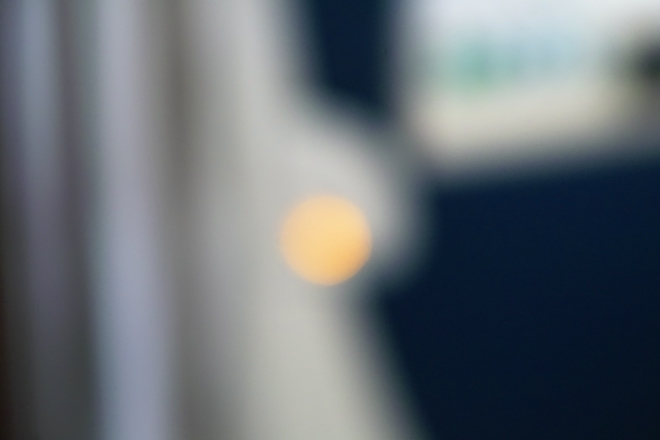
(LED diode on my computer's case)
_________________
(almost) complete list of Helios lenses |
|
| Back to top |
|
 |
estudleon


Joined: 15 May 2008
Posts: 3754
Location: Argentina
|
 Posted: Mon Oct 04, 2010 2:54 pm Post subject: Posted: Mon Oct 04, 2010 2:54 pm Post subject: |
 |
|
estudleon wrote:
TBaker
I find your pics with very nice bokeh, something magic about them.
Martin.
Your S-M-C is a real very good lens. No doubts. I find the lens a very good compromise between good resolution power, neutral contrast and nice bokeh.
In the takumars 1,4 line, perhaps the more subtles images and better bokeh, can be find oion the 8 elements version.
Rino.
_________________
Konica 2,8/100
CZJ: 4/20, 2,4/35, 1,8/50 aus jena, 3,5/135MC, Pentacon 1,8/50
Pentax S-M-C-1,4/50
Helios 44-3
Mamiya 2,8/135
Misc. : jupiter 9
Stuff used:
A) SRL
Alpa 10 D - kern macro Switar 1,9/50 -black, Kilffit apochromat 2/100.
Asahi pentax spotmatic super takumar 1,4/50
Contaflex super B tessar 2,8/50 Pro-tessar 115
Leica R3 electronic summicron 2/50 elmarit 2,8/35
Konica Autoreflex 3 (2 black and chrome one), TC, T4. 2,8/24, 3,5/28 not MC and MC, 1,8/40, 1,4/50, 1,7/50 MC and not MC, 1,8/85, 3,2/135, 3,5/135, 4/200
Minolta XG9 2,8/35, 2/45, 3,5/135
Nikkormat FTn 1,4/50, 2,8/135
Fujica ST 801, 605, 705n. 3,5/19, 1,4/50, 1,8/55, 4/85, 3,5/135.
Praktica MTL 5 and a lot of M42 lenses.
Voigtlander. Bessamatic m, bessamatix de luxe, bessamatic cs, ultramatic and ultramatic cs.
Skoparex 3,5/35, skopagon 2/40, skopar 2,8/50, skopar X 2,8/50, super lanthar (out of catalogue) 2,8/50, dinarex 3,4/90, dinarex 4,8/100, super dinarex 4/135, super dinarex 4/200, zoomar 2,8/36-83, portrait lens 0, 1 and 2. Curtagon 4/28 and 2,8/35
Canon AV1, 1,8/50
Rolleiflex SL35 and SL35 E. 2,8/35 angulon, 2,8/35 distagon, 1,4/55 rolleinar, 1,8/50 planar, 4/135 tessar, 2,8/135 rolleinar, x2 rollei, M42 to rollei adap.
Etc.
RF
Yashica Minister III
Voightlander Vito, vitomatic I, Vito C, etc.
Leica M. M2, M3 (d.s.) and M4. Schenider 3,4/21, 2/35 summaron 2,8/35 (with eyes). Summicron 2/35 (8 elements with eyes), 2/35 chrome, 2/35 black, 1,4/35 pre asph and aspheric - old -, 2/40 summicron, 2,8/50 elmar, 2/50 7 elements, 2/50 DR, 2/50 - minolta version, 1,4/50 summilux 1966 version, 1,4/75 summilux, 2/90 large version, 2/90 reduced version of 1987, 2,8/90 elmarit large version, 4/135 elmar. |
|
| Back to top |
|
 |
blende8


Joined: 29 Sep 2007
Posts: 260
Location: Bremen, Germany
|
 Posted: Mon Oct 04, 2010 4:21 pm Post subject: Posted: Mon Oct 04, 2010 4:21 pm Post subject: |
 |
|
blende8 wrote:
| no-X wrote: |
| blende8: I'd recommend non-retrofocal lenses and particularly designs, which have more lens elements than what is typical for the specific lens speed. |
Interesting theory.
Obvious question: Why should this be so?
I would be fully convinced if I could see a comparison of your Volna with some conventional design of the same scene.
Never heard about this Volna.
(The only Russian lens I have is the Cyclop.)
Do you have a lens diagram?
_________________
Best wishes, Wieland
K-1, K-5IIs
Pentax, mysterium quod absconditum fuit ... |
|
| Back to top |
|
 |
AhamB

Joined: 22 Jun 2008
Posts: 733
Location: Germany
|
 Posted: Mon Oct 04, 2010 4:40 pm Post subject: Posted: Mon Oct 04, 2010 4:40 pm Post subject: |
 |
|
AhamB wrote:
| no-X wrote: |
| And finally, one of the most complex f/2.8 50mm design is Volna-9 with 6 elements in 5 groups. Volnas OOF lights are really good, no ring-shaped borders |
The Volna-9 definitely has some of the "best" bokeh I've seen. If only it had a nice 10+ blade round aperture, it would be even great with OOF highlights at smaller apertures (instead of the funny stars it makes now, like the Takumar 50/4 macro). |
|
| Back to top |
|
 |
no-X


Joined: 19 Jul 2008
Posts: 2495
Location: Budejky, Czech Republic
|
 Posted: Mon Oct 04, 2010 4:47 pm Post subject: Posted: Mon Oct 04, 2010 4:47 pm Post subject: |
 |
|
no-X wrote:
| blende8 wrote: |
Interesting theory.
Obvious question: Why should this be so? |
just empiric experience  but I think it does make sense, because the more elements you have, the more corrections (which doesn't negatively impact each other) can be used... also in a Sigma interview there was a mention, that a lens design, which doesn't bend rays drastically is always better (that in fact describes telecentric lens and telecentric retrofocal lenses have typically more elements and smoother bokeh, than non-telecetric ones) but I think it does make sense, because the more elements you have, the more corrections (which doesn't negatively impact each other) can be used... also in a Sigma interview there was a mention, that a lens design, which doesn't bend rays drastically is always better (that in fact describes telecentric lens and telecentric retrofocal lenses have typically more elements and smoother bokeh, than non-telecetric ones)
| blende8 wrote: |
I would be fully convinced if I could see a comparison of your Volna with some conventional design of the same scene.
Never heard about this Volna.
(The only Russian lens I have is the Cyclop.)
Do you have a lens diagram? |
Volna series share optical design similar to 6/5 ultron with thick front 2nd and 3rd elements. Exact diagram of Volna-9 isn't available, but it's similar to other Volna lenses and it's decribed here:
http://forum.mflenses.com/optical-diagrams-t14837,start,15.html#201215
I'll try to make a comparision with other 50mm lens, but I'm affraid I have no 50/2.8 tessar at the moment. Anyway, here are some pictures taken with Volna-9 at f/2.8:
   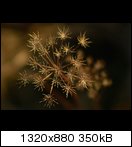  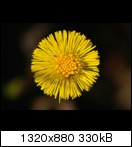   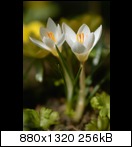 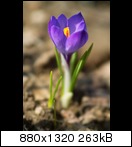
_________________
(almost) complete list of Helios lenses |
|
| Back to top |
|
 |
martyn_bannister


Joined: 23 May 2010
Posts: 1151
|
 Posted: Mon Oct 04, 2010 5:11 pm Post subject: Posted: Mon Oct 04, 2010 5:11 pm Post subject: |
 |
|
martyn_bannister wrote:
Good, bad, or indifferent, I have certainly learnt a lot about the different aspects of bokeh from this thread. I thank you all very much. |
|
| Back to top |
|
 |
blende8


Joined: 29 Sep 2007
Posts: 260
Location: Bremen, Germany
|
 Posted: Mon Oct 04, 2010 5:44 pm Post subject: Posted: Mon Oct 04, 2010 5:44 pm Post subject: |
 |
|
blende8 wrote:
Thanks no-X.
I have found the Volna-9 diagram here:
http://www.luciolepri.it/lc2/marcocavina/articoli_fotografici/kiev_volna9/00_pag.htm
_________________
Best wishes, Wieland
K-1, K-5IIs
Pentax, mysterium quod absconditum fuit ... |
|
| Back to top |
|
 |
no-X


Joined: 19 Jul 2008
Posts: 2495
Location: Budejky, Czech Republic
|
 Posted: Mon Oct 04, 2010 7:01 pm Post subject: Posted: Mon Oct 04, 2010 7:01 pm Post subject: |
 |
|
no-X wrote:
Thanks! Backuped 
Anyway, here's one more f/2.8 shot I forgot to post in my previous message. This one shows IF-OOF transitions:
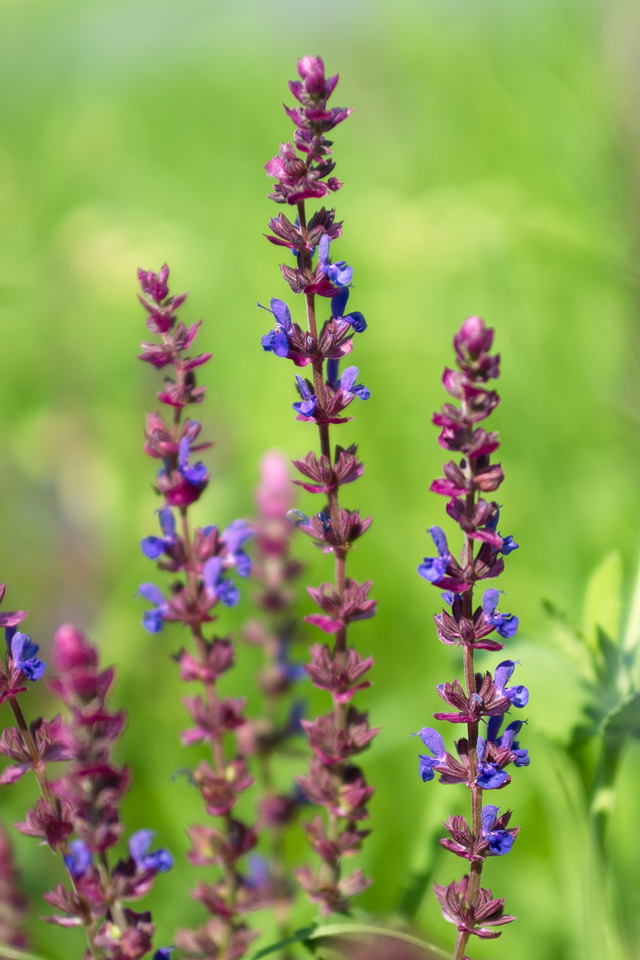
_________________
(almost) complete list of Helios lenses |
|
| Back to top |
|
 |
blende8


Joined: 29 Sep 2007
Posts: 260
Location: Bremen, Germany
|
 Posted: Tue Oct 05, 2010 1:59 pm Post subject: Posted: Tue Oct 05, 2010 1:59 pm Post subject: |
 |
|
blende8 wrote:
I was looking around for more Volna-9 photos and found the one below, by forum member "voe".
This image shows clearly that with this lens, the normal behaviour is reversed. The circles with bright border are in the foreground and not in the background, as it is usually the case.
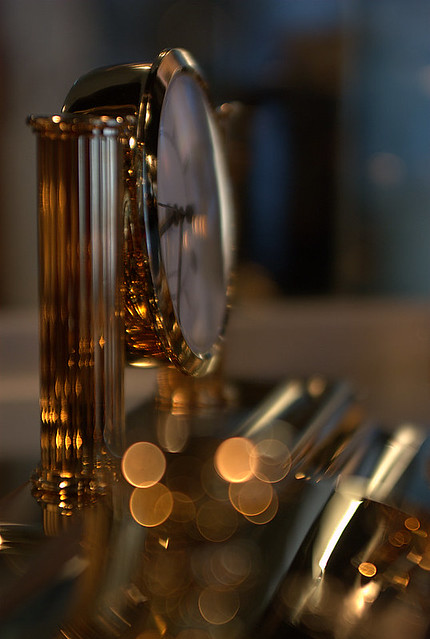
source: http://www.flickr.com/photos/voe/2792581328/sizes/z/in/photostream/
Here is another photo by voe, that shows very smooth background Bokeh:
http://www.flickr.com/photos/voe/2762788464/sizes/z/in/pool-576441@N25/
_________________
Best wishes, Wieland
K-1, K-5IIs
Pentax, mysterium quod absconditum fuit ... |
|
| Back to top |
|
 |
huhging

Joined: 25 Jul 2008
Posts: 248
Location: New York
|
 Posted: Tue Oct 05, 2010 2:24 pm Post subject: Posted: Tue Oct 05, 2010 2:24 pm Post subject: |
 |
|
huhging wrote:
This lens was made specifically in mind for a nice bokeh ...
Sony 135 STF ...



_________________
Canon 5D Mk III
Canon 24-105L IS
Contax 100/2.0
Contax G90/2.8
Minolta Rokkor 21/2.9
Minoltal Rokkor 100/2.0
Sony A7r
Zeiss ZM 18/4.0
Olympus Zuiko 21/3.5
Voigtlander 35/1.2 II
Voigtlander 50/1.1 II
Leica Apo M 90 ASPH
Meyer Tripolan 100/2.8 |
|
| Back to top |
|
 |
woodrim


Joined: 14 Jan 2010
Posts: 4060
Location: Charleston
|
 Posted: Tue Oct 05, 2010 3:11 pm Post subject: Posted: Tue Oct 05, 2010 3:11 pm Post subject: |
 |
|
woodrim wrote:
Martyn - PM sent.
_________________
Regards,
Woodrim |
|
| Back to top |
|
 |
|
|
